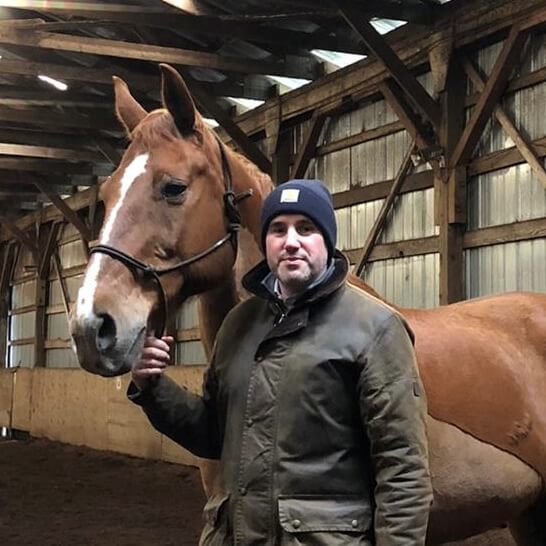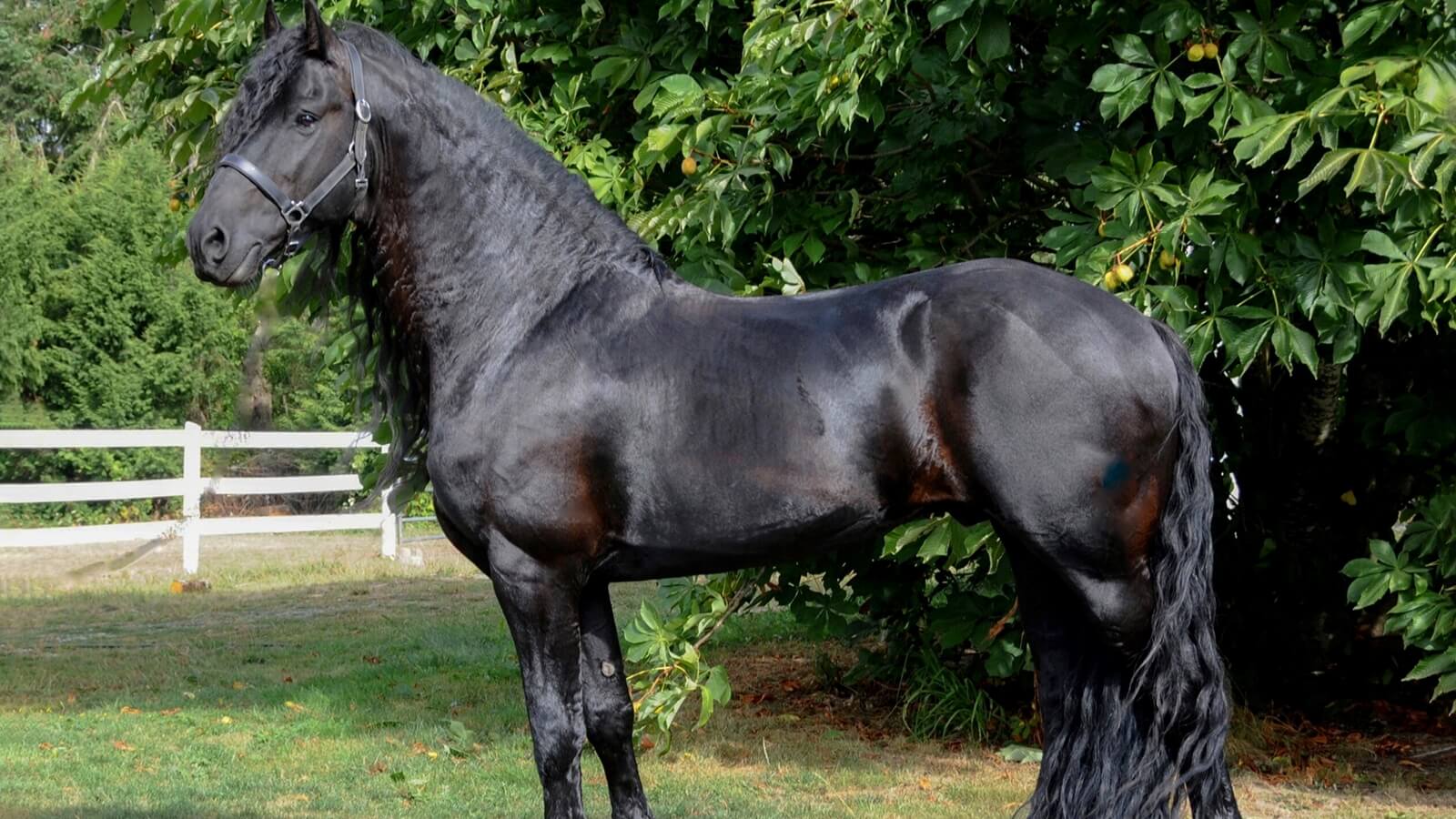Breeding stallions are some of the most expensive horses in the world. Their semen can sell for millions of dollars so it’s reasonable for their owners to want to keep them safe. This commercial value has often led to stallions being kept in conditions that limit their ability to express normal behavior—an essential element of animal welfare. As Dr. Sue McDonnell, founding head of the Equine Behavior Program at the University of Pennsylvania explains, “The more valuable a stallion is, the more their welfare is potentially compromised.”
How can we manage stallions in a way that improves their quality of life—and their behavior as a result?
The Domestic World
Dr. Christine Aurich, head of the Graf Lehndorff Institute for Equine Science at the Vetmeduni Vienna, Austria and co-author of the article “Aspects of Breeding Stallion Management with Specific Focus on Animal Welfare” said that stallion owners have become so concerned with injuries they “don’t let them live like horses.” Individually stabled for most of the time, their contact with other horses, if it happens at all, is closely monitored so that no injuries occur.
In breeding stables, stallions are often housed together in the same barn but in individual stalls. It has been noted that over time, horses housed under these conditions can take on the characteristics of a bachelor herd despite their limited physical interaction. One of the downsides to this method is that housing sexually active stallions adjacent to each other has the potential to create highly charged and stressful situations for them. On the other hand, stallions housed with mares or within sight of mares places them in “situations which can challenge them behaviorally; they see what they want but they are unable to act on their natural impulses,” according to McDonnell.
Living conditions have improved in Western countries since the 1980s, according to Dr. Aurich. Before this, it was common to keep stallions in tie-stalls which offered little opportunity for free movement and raised serious concerns around welfare, especially as horses spent most of the day standing in their own manure and urine.
The Natural World
Far removed from their domestic cousins, stallions in the wild are social rather than solitary creatures, spending their lives as either an alpha stallion (harem stallion) in a group of females and their foals or in a bachelor herd. Very little of their time is spent in isolation, contrary to their management in a domestic environment where access to both pasture grazing and other horses is minimized. The consequences, Aurich suggests in her report, are that stallions are exhibiting increased incidences of aggression and stereotypies, the very behavior breeders are trying to avoid.
British Columbia, Canada
Making my way up the driveway to Abbyshire Farm on Vancouver Island in British Columbia, it was already apparent to me that I didn’t need to travel too far from home to find an example of welfare-aware stallion management.
Dawn Ianson, owner of Abbyshire Farm, points to a jet-black Friesian in the pasture closest to us. “He could slip or trip, he’s wearing shoes and the field is wet, but he’s a horse.” This made it clear to me that allowing her stallion to live like a horse takes priority over anything else.
Ianson owns two stallions. Ulke Jildert, a purebred Friesian, was awarded his Sport Predicaat in 2016 by the KFPS and is one of only three stallions approved as the foundation stallions in the Canadian Friesian Horse Stud Book. Ianson’s second stallion, Konig Ryker, a Friesian-Shire cross, exudes power and elegance but behind his eyes there is an underlying intelligence, mystery, and gentleness.
Both stallions live in a modified version of the natural world. Ulke has his own paddock and just across the driveway is his herd of two mares, a colt, and a gelding. He has visual access and the ability to communicate and patrol the fence line as a stallion would patrol his harem in the wild. I observe that he always has one eye on his herd. When I walk to their pasture, he comes closer to his own fence to make sure I pose no threat, I’m certain.
Ryker lives in similar conditions and shares his pasture with an infertile mare that keeps him company. Consistency, Ianson explains, is the key to management of her stallions. “They have friends, consistency in routine and people, and most importantly they have their girls. Most stallions don’t.” She puts the good behavior of her horses down to happiness. They aren’t bored—they have jobs to do. Each will look after their herd as they would in the wild.
These two versions of manufactured herd dynamics have worked well for Ianson over the years and she reports no stereotypies or abnormal behavior in her horses.
To replicate Abbyshire’s system on a large scale would take a huge capital investment which only the richest of farms can afford. In addition, there’s still the risk that a horse could be injured, a risk most farms are unwilling to take with their most profitable assets.

Typically, Dr. Aurich says, domestic stallions are born and raised in a group. These fully socialized horses are then separated to individual stalls around two years of age. The impact on their welfare at this stage in their development is immense. Research has shown that depriving these young horses of social interaction with other horses for a period of nine months had a far greater impact on their long-term social behavior than those kept within small groups.
What we should be asking ourselves, she continues, is “How can we keep them together? Can we have a bachelor herd and allow them contact with each other?”
In the Rauris Valley of Austria it has become tradition that at the end of the breeding season, the sires of the Noriker draft horse breed are released onto mountain pastures to spend their summers. The highlight for locals and tourists alike is the opportunity to witness the ritual “fights” among the 20 or so stallions when they are released. These fights are common among stallions and believed to play an important role in group hierarchy as to which horse will take the position of lead stallion in each group throughout the summer. These horses aren’t alone though in their 2100-acre pasture 6500 feet above sea level. They are joined by around 100 mares, foals, and juvenile horses, 330 calves, and 230 sheep and goats. Over the long days of summer these stallions live a life as close to wild as their ancestors would have lived.
Aurich believes that giving stallions the opportunity to socialize with each other more frequently in a group environment (thus removing the chance of them becoming unsociable) could improve their social skills in the long run.
A Final Thought
There are clearly alternatives for stallions to live comfortably and safely and still within the financial constraints of their owners. However, owners will need to think creatively and outside the box (pun intended) if they want to improve the welfare of their breeding stallions.
See this article in the May/June 2022 online edition:

Mark B. Andrews is a British Columbia, Canada based freelance equine writer. Originally from the United Kingdom, he now lives on Vancouver Island with his wife and two daughters—all as passionate as he is about horses and equestrian sports. He is currently studying Equine Studies at the University of Guelph.

